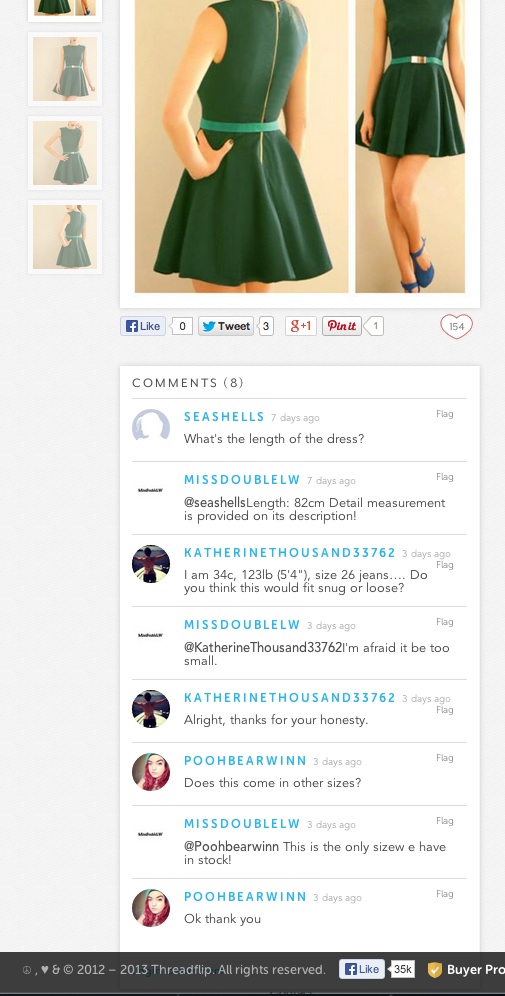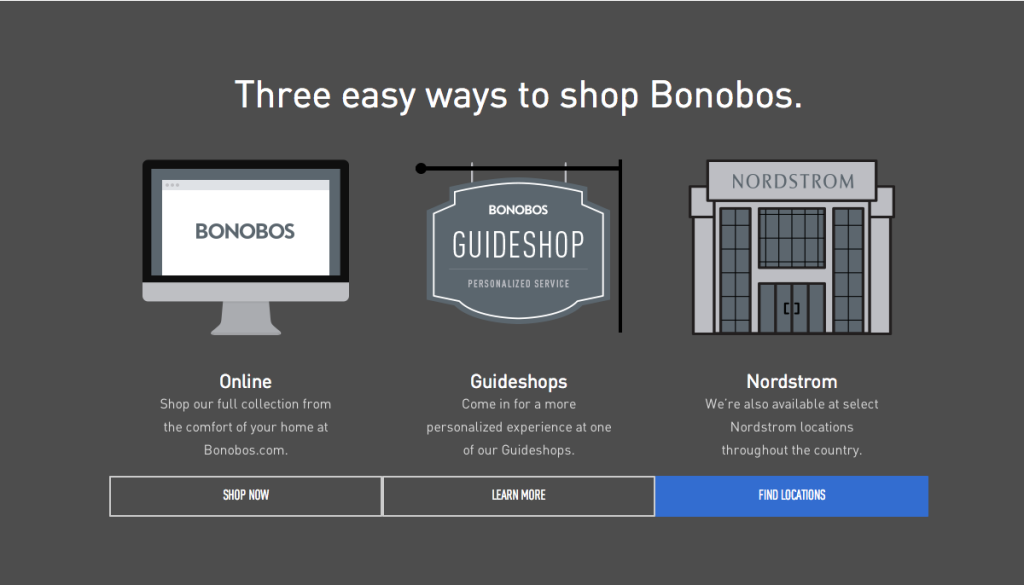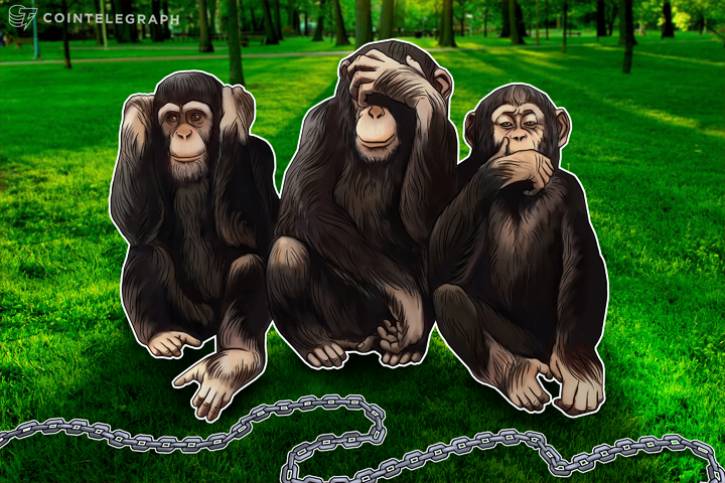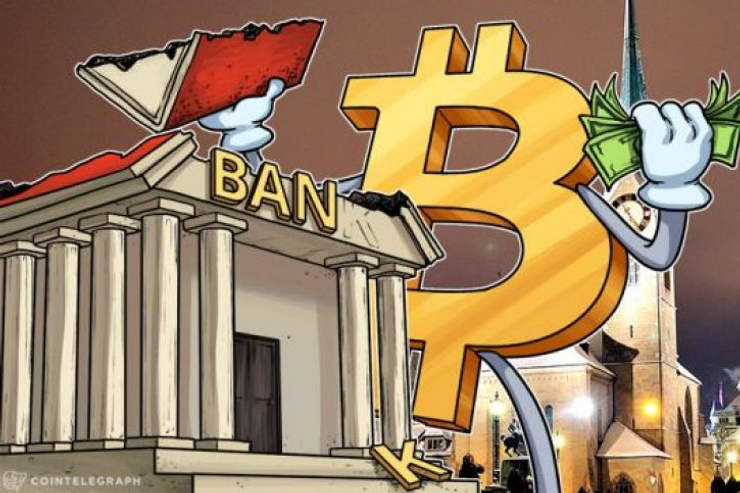Hi, I’m Adil Wali. I became a Microsoft certified professional at age 14 and started my first web development company. That led to a career as a serial entrepreneur, advisor, and startup investor. I got my first “real job” at 33, and I’m now a FinTech executive with a passion for the markets.

To begin, I’d like to say, “I’m back!” I’m committed to being a better, more frequent, blogger. Instead of simply stating publicly that I’m going to try harder (which I’ve done before…and failed), I intend to simply prove it. Stay tuned and see if I’m telling the truth.
My newest company is focused on scaling global technology teams for high-growth companies. Many of our earliest customers are eCommerce companies. (This is not purely coincidence: I was a Founder at ModCloth, an investor in Touch of Modern, and an advisor to Blank Label.) So I’ve done a lot of thinking lately about the future of eCommerce. My goal is to share the fruits of my research and analysis with you. With that thought in mind, this post is intended to get you up-to-speed. This is the stuff I already know, and much of it may not be new to you. Moving forward, I intend to dive deeper into the nitty gritty.
Before I jump into things, if you are totally new to eCommerce (or just want to have a little more background) I suggest that you check out this report from the National Retail Federation. It provides a brief history of eCommerce as well as an overview of the eCommerce landscape in 2012 and 2013.
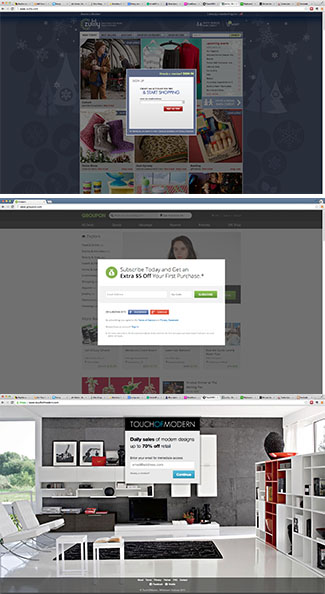
eCommerce is getting very competitive. Fast.
This post is about the big picture. eCommerce has evolved a lot over the past seven years. Online retailers are reaching more people around the world (see the recent Wall Street Journal article on Russia’s emerging eCommerce market) through more channels. With more points of access to retailers, more retailers, and more product choice, consumers are gaining power at an unprecedented rate. And with more consumers with more personal choice, retailers have to compete more than ever to win that consumer’s custom. In order to compete, retailers have to up their game, and they’ve been doing so in a myriad of ways.
Trend #1: Flash Sales and Deep Discounts It’s not the newest trick in the book, but sites offering flash sales and deep discounts are still making headway in the eCommerce world. One point of success for these companies is that they require the consumer to sign up before he or she can see any of the offers. This allows sites like Groupon, TouchofModern, and Zulily to better track and identify their users. Whether you’ve visited once, twice, or fifteen times, they can customize their marketing to your apparent interest level.
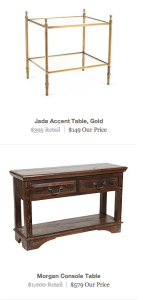
Other sites like One Kings Lane and Wayfair (see here an interesting article on Wayfair’s approach to indecisive consumers) may not require you to sign in, but they publish their discounts on the page (see image) and on sites like One Kings Lane, sales only last for a certain amount of time, encouraging consumers to buy quickly or lose out on the deal.
Trend #2: ReCommerce Deals don’t only come in the form of sales. Companies like thredUP and Threadflip are bringing second-hand retail to the internet. Nor does it only apply to clothing. Gazelle is a site where consumers can selltheir used electronics. Offering verification services for used items brings the whole second-hand marketplace online. It also allows shoppers and sellers to directly communicate with each other about things like size and availability.
Trend #3: Social Shopping Although the social shopping trend hasn’t seen too much implementation amongst individual retailers, it may not be far off in the future. If friends share what they buy with each other through channels like Pinterest, Facebook, and Wanelo how long will it take before major online retailers implement their own social shopping platforms? A slightly different form of social shopping, Yardsale incorporates both secondhand and social elements. A mobile-only app, it makes your local garage sale available right on your phone.
Trend #4: Subscription Commerce In contrast, a trend that has taken off amongst online retailers and consumers is the subscription model. Companies like Birchbox, ShoeDazzle, BlueApron, and Fancy are all using it, to lesser and greater success. The appeal of the model for the retailer is that it solves the problem of CLV (customer lifetime value). For the consumer, boxes provide a sense of personalization, and for boxes like those from Fancy (who predetermines the content of each box along some basic themes), they also provide a solution to the paradox of choice. For a lot more insight andsome interesting reviews of the many subscription box options out there, check out My Subscription Addiction. You can get an even better of idea of who’s doing it well and who’s just making it work.
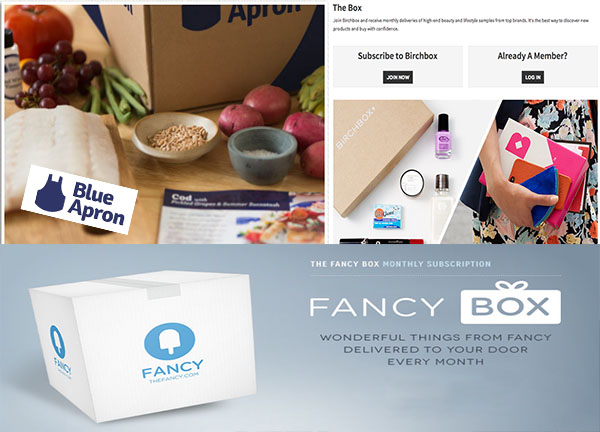
Trend #5: Digital to Brick In a world of pure-play vs. multi-channel, many eCommerce companies have opted for the online (and mobile) route in order to keep down the costs behind traditional brick and mortar retail. But one company has found a way to do both – and to both the company and the customer’s benefit. Bonobos, originally an internet-only retailer has begun opening “guideshops.” Recognizing a desire in their customers to try before they buy, customers can nowgoto designated guideshops to try out clothes and then place an order online and in-store. The orderis delivered to their home. Glasses brand Warby Parker has also begun opening stores that offer in-store optometrist appointments and a carefully curated selection of books with which to test your newfound eyeware. Fashion jewelry site BaubleBar offers in-store visits by appointment only with perks including styling sessions, a free tote bag and other small delights.
Trend #6: The convergence of content and commerce An interesting partnership is emerging between Flipboard and online retailers. Flipboard now offers clickable catalogs for retailers like eBay, Banana Republic, Modcloth and more. And they’re creating a platform not only for retailers, but for users too. For more information, check out this article.
Trend #7: Vertical Integration Finally, one of the most interesting trends emerging-and it’s significant to note that this is the only non-user-facing trend I’ll discuss here-is the movement towards vertical integration. This is a trend focused on creating a sustainable competitive advantage, not simply generating sales. For this reason, although I’ve mentioned it here, I want to come back to this trend in more depth. So keep your eyes open for a post on vertical integration and how it fits into the future of eCommerce.
So how do you compete? I don’t know yet.
Alright, so now you’ve got an idea of some of the developments and innovations I’ve taken note of in the world of eCommerce. It’s a tough world out there, but the little guys are finding some pretty good ways to fight back. (For other interesting trends, check out this article) But what does all this mean for the future of eCommerce? First, and perhaps most significantly, consumers are winning. They get more choice overall: products, costs, brands. But having this as our number one takeaway raises questions about loyalty, marketing technique, and sustainability. In particular, the following questions come to mind:
1. If the consumer has so much power of choice, what does the future of CLV and loyalty look like?
2. If loyalty is becoming ever more unattainable, how important is CPA? Is it possible to attract consumers and drive purchase behavior without some kind of gimmick?
3. This gives rise to my next question: should retailers really try to differentiate based on existing customer loyalty vs. new customer acquisition?
4. And if gimmicks are the best way to attract consumers, what’s the half-life of user-facing innovations on the web? How long is the window for gimmicks open and what are the benefits of being a fast follower?
To be honest, I don’t have the answers for these questions just yet. But I promise I’ll get back to you soon with some more insight.
